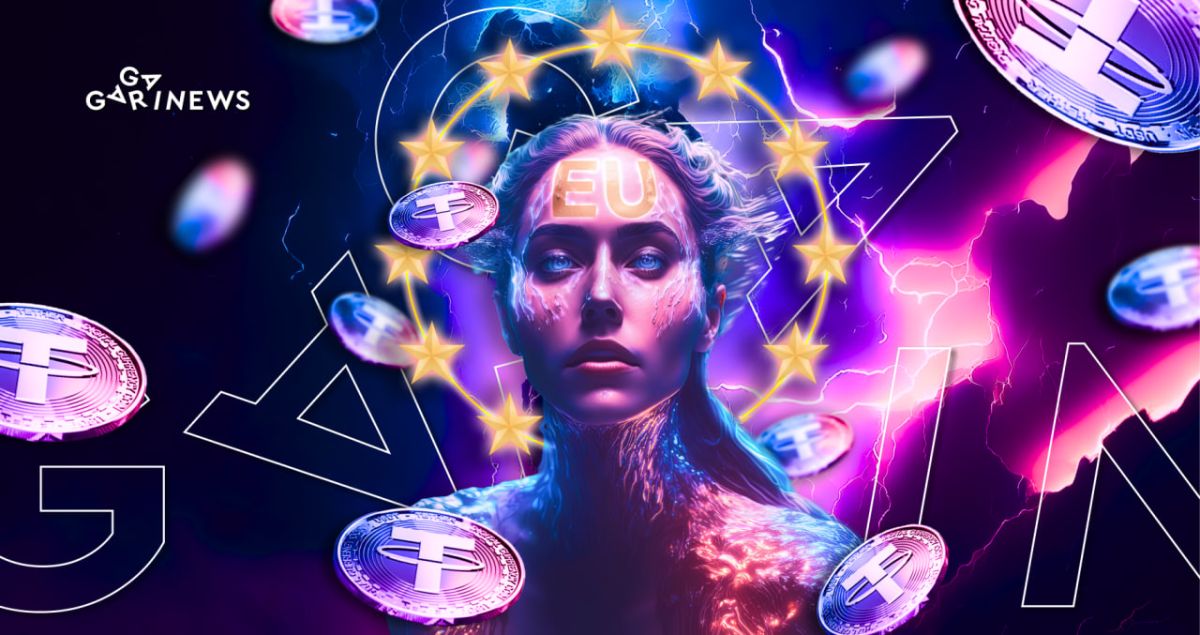Untapped Potential of Europe: M2M Payments in Stablecoins.

In collaboration with Lipis Advisors, the Digital Euro Association has released a report that examines the benefits and drawbacks of stablecoins in machine-to-machine (M2M) payments, highlighting Europe’s vast potential in this area.
On this page
The debate over the risks of using stablecoins continues among policymakers and experts. Yet these digital assets are rapidly developing and becoming integrated into the daily lives of not just cryptocurrency enthusiasts, but also the general public. However, the main issue is that many people lack a clear understanding of their potential, particularly in Europe, where innovations are often slow to be adopted. This could result in missed opportunities for stablecoins to drive economic development in the coming decades.
At present, there are no successful stablecoins in Europe. As of November 2022, the combined market capitalization of all euro-tokens was around $500 million, accounting for only 0.2% of the overall market. This situation has not changed in over six months, representing an obvious setback, especially considering that many European countries have a positive stance towards cryptocurrencies.
After the adoption of MiCA, the main issues related to stablecoin regulation should be resolved. However, in addition to easy access to DeFi and accelerated transfers, the question of application will still remain open. The answer may lie in the Internet of Things (IoT) market and, in particular, machine-to-machine payments.
What is the difference between IoT and M2M payments?
Before exploring this field in depth, it is crucial to understand the distinction between IoT and M2M. The Internet of Things refers to a network of devices and objects that are equipped with software and other technologies to transmit and receive data among themselves over the internet.
By the end of 2021, there were approximately 11.3 billion active IoT devices, and it is projected that their number will reach 30 billion by 2030. The trends are clear, and in the near future, the Internet of Things could become relevant for the majority of economic sectors.
Based on their degree of programmability and autonomy, IoT payments can be divided into four groups:
- Informational (for obtaining account-related data);
- Permission-based (requires user confirmation);
- Conditional payments (based on pre-set rules);
- Machine-to-machine (M2M) payments (instant automated transfers between devices based on an algorithm, such as a smart contract).
In other words, all M2M payments are IoT payments, but not vice versa.
What's the point of m2m?
Following the coronavirus crisis, the volume of digital transactions and connected devices has surged in Europe, while the density of autonomous robots per 10,000 people has risen in the industrial sector. The average in Western Europe stands at 225 units, with Germany taking the lead at around 330 units. On a global scale, Singapore and South Korea are the top players, with over 850 units.
Given the US and Asia's leadership in the field of home automation, it will be challenging for European countries to break into the top ranks. However, Europe still holds the lead in the number of SIM cards that can serve as identifiers for M2M modules. By utilizing this advantage, Europe can demonstrate significant progress in the context of the global growth of M2M payments, thereby avoiding falling behind other regions.
Such payments have several advantages:
- They are initiated by the paying device based on the conditions of a smart contract, and are executed instantly without human interaction.
- They are economically efficient when performing small tasks.
But there are also issues that need to be addressed:
- Significant risks of hacking. Such threats can be mitigated by providing each device with a separate wallet with expenditure limits.
- Scalability is a primary concern when using cryptocurrencies for M2M payments, particularly given the sheer number of devices involved.
It is essential to not only grasp the pros and cons of IoT payments, but also to envision the exciting scenarios in which they can be utilized. Imagine effortless payments for parking, tolls, or recharging electric vehicles, or seamless payments for water and electricity based on consumption data. These innovative solutions offer a convenient and efficient way to manage payments, making life simpler and more enjoyable for consumers.
Why choose stablecoins?
With the advancements in artificial intelligence, new technologies like 5G, Bluetooth Low Energy, and blockchain-based applications, M2M payments have the potential to thrive in Europe.
However, in order to achieve this, it is essential to employ cryptocurrencies. Cryptocurrencies possess the capacity for programmability through smart contracts, which is not found in conventional bank transfers that are incapable of furnishing such an infrastructure.
It is important to note that regular tokens are too volatile for end-users. A “white” commercial Euro stablecoin has the potential to provide a solution for Europe, especially considering the ECB's own digital currency will not be approved until 2026. Additionally, the regulator has already expressed a lack of priority for M2M payments in its project, which presents an opportunity for stablecoins to easily fill this niche.
Regulatory challenges
Anticipating the integration of stablecoins into IoT, specialists have already pinpointed a series of problems that must be resolved to foster the seamless development of M2M payments:
1. The lack of device identification systems.
Regulatory bodies will urge for the establishment of a centralized database that includes identifiers such as digital keys and certificates, and specifies which devices are permitted to interact with wallets.
2. Gaps in existing regulations.
In practice, M2M payments are at odds with the PSD2 (the EU's Second Payment Services Directive) and GDPR, as they are not covered by the current legal framework. It remains unclear how regulators will react to this.
3. Lack of guidance on non-hosted wallets.
Following the adoption of MiCA, stablecoins will be provided with regulatory clarity, yet there remain open aspects concerning the interaction with non-hosted wallets. At present, it is generally agreed that crypto service providers must verify wallet ownership when transferring more than 1000 euros. However, further clarification may be required to address any potential ambiguities.
4. Incompatibility between stablecoins and devices.
Legislators are tasked with establishing a uniform standard for stablecoins and devices in M2M payments, such as specific blockchains. While having multiple companies can foster healthy competition, it also poses the risk of creating uncontrolled flows of funds and fragmenting the market. Therefore, the establishment of a common standard will ensure a more stable and secure ecosystem for M2M payments, providing a streamlined experience for end-users.
Wrapping up
The European economy can certainly reap immense benefits from the development of M2M payments in stablecoins. However, it's important to tackle technical and regulatory issues beforehand instead of postponing them, and thereby ceding leadership to China and the US. Let's not allow procrastination to be the thief of innovation!
The content on The Coinomist is for informational purposes only and should not be interpreted as financial advice. While we strive to provide accurate and up-to-date information, we do not guarantee the accuracy, completeness, or reliability of any content. Neither we accept liability for any errors or omissions in the information provided or for any financial losses incurred as a result of relying on this information. Actions based on this content are at your own risk. Always do your own research and consult a professional. See our Terms, Privacy Policy, and Disclaimers for more details.


























